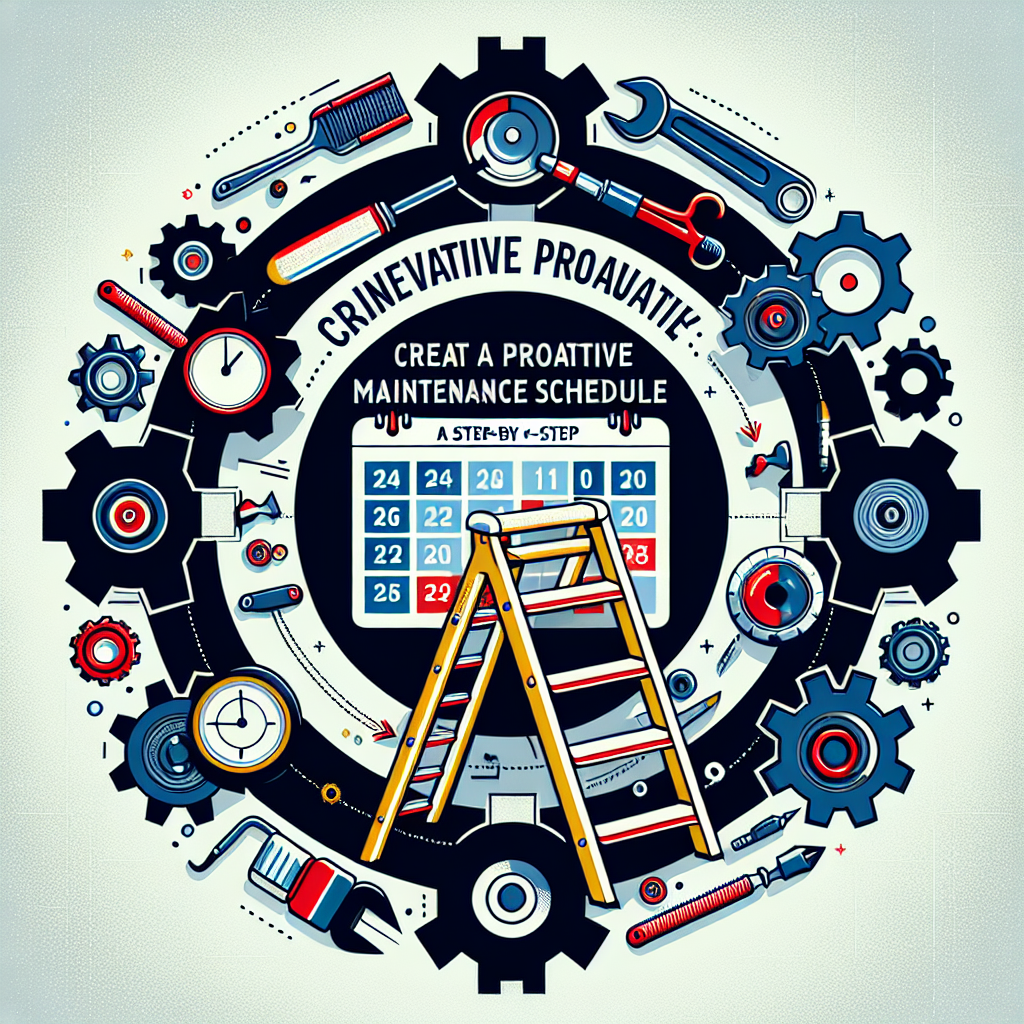Your cart is currently empty!
Creating a Proactive Maintenance Schedule: A Step-by-Step Guide

Creating a proactive maintenance schedule is essential for keeping your equipment and machinery in top working condition and preventing costly breakdowns. By scheduling regular maintenance tasks, you can ensure that your equipment operates efficiently and safely, extending its lifespan and reducing the risk of unexpected downtime. In this step-by-step guide, we will walk you through the process of creating a proactive maintenance schedule for your facility.
Step 1: Identify your equipment and assets
The first step in creating a proactive maintenance schedule is to identify all the equipment and assets that require regular maintenance. This includes machinery, tools, vehicles, and any other assets that are critical to your operations. Make a list of each piece of equipment, along with its make and model, serial number, and any specific maintenance requirements.
Step 2: Determine maintenance tasks and frequencies
Next, you will need to determine the maintenance tasks that need to be performed on each piece of equipment and how often they should be done. This may include tasks such as oil changes, filter replacements, lubrication, calibration, and inspections. Consult the manufacturer’s guidelines, equipment manuals, and industry best practices to determine the recommended maintenance tasks and frequencies for each piece of equipment.
Step 3: Create a maintenance schedule
Once you have identified the equipment and maintenance tasks, it’s time to create a maintenance schedule. This schedule should outline when each maintenance task needs to be performed, who is responsible for carrying it out, and any specific instructions or procedures that need to be followed. You can use a spreadsheet or scheduling software to organize and track your maintenance schedule.
Step 4: Implement a preventive maintenance program
In addition to scheduling regular maintenance tasks, consider implementing a preventive maintenance program to proactively identify and address potential issues before they lead to equipment failure. This may include conducting routine inspections, monitoring equipment performance, and performing predictive maintenance tasks based on data and analytics.
Step 5: Monitor and track maintenance activities
Once your proactive maintenance schedule is in place, it’s important to monitor and track maintenance activities to ensure that tasks are being completed on time and to a high standard. Use a maintenance management system to record and track maintenance activities, schedule reminders for upcoming tasks, and generate reports to analyze maintenance performance.
By following these steps and creating a proactive maintenance schedule, you can improve the reliability and performance of your equipment, reduce downtime, and extend the lifespan of your assets. Investing time and resources in proactive maintenance can ultimately save you money in the long run and help your facility operate more efficiently.

Leave a Reply